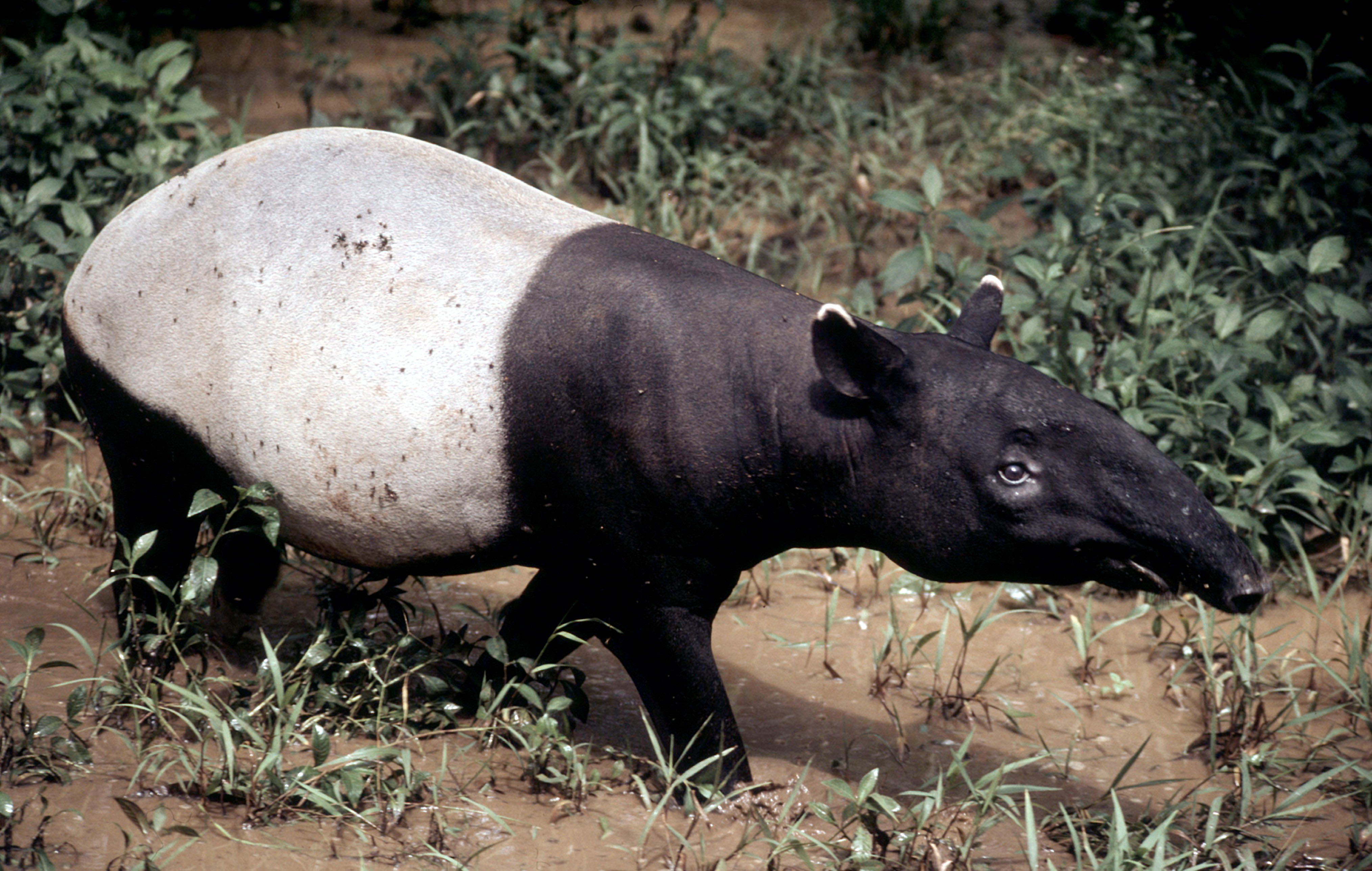TAKE A CLOSER LOOK AT TAPIR
By Jacqui Fetchet
The Tapir is a rare and unique mammal species. This ancient herbivore resembles aspects of the elephant, pig, rhinoceros and horse, yet numbers are rapidly diminishing and are a highly endangered species that threatens extinction. They have a small trunk-like mouth used to consume branches and fruits. They play an essential role in the ecosystem as they help to spread seeds through consumption and defecation.
Conservationists are working to maintain populations, but the low reproduction rate, gestation period of thirteen months and single birth pose biological challenges to their survival.
There are four species found throughout the world, a significant population having habitats in Central and Southern Sumatra and Malaysia. The black and white Malay Tapir grows up to 363 kilograms and is the largest Tapir in the world. They reside in lowland areas during the dry season and move to mountain areas during the wet season. However, several major human forces are threatening their natural environments.
As for many endangered species within Indonesia, logging, deforestation and industry are contributing to the removal of their habitats. Invasive human presence has resulted in the development of agriculture, including tobacco, palm oil and rubber and increased human settlement. Such forest conversion has decreased Tapir numbers as they struggle to adapt to a changed environment and broader threats. Although there are protected areas and national parks, many live beyond these boundaries and their survival is still susceptible to hunting and agriculture.
WWF promotes video camera trap as other wildlife conservation campaigns instrument in protecting the Tapir. Increased education, reduced deforestation and limiting forest conversion to certain areas are measures necessary to maintain their existence. As long as human destruction of valuable wildlife habitats continues, species like the unusual Tapir remain threatened.
WWF gained footage of the two Tapirs in wildlife corridor between Bukit Tiga Puluh National Park and Rimbang Baling wild life reserve, Riau, Sumatra, through use of the video camera-trap on October 2009. One tapir was approaching the camera and the other one standing looking at the camera from a distance. The use of video camera trap has also been successful in capturing images of the rare Sumatran Tiger and other wildlife.

